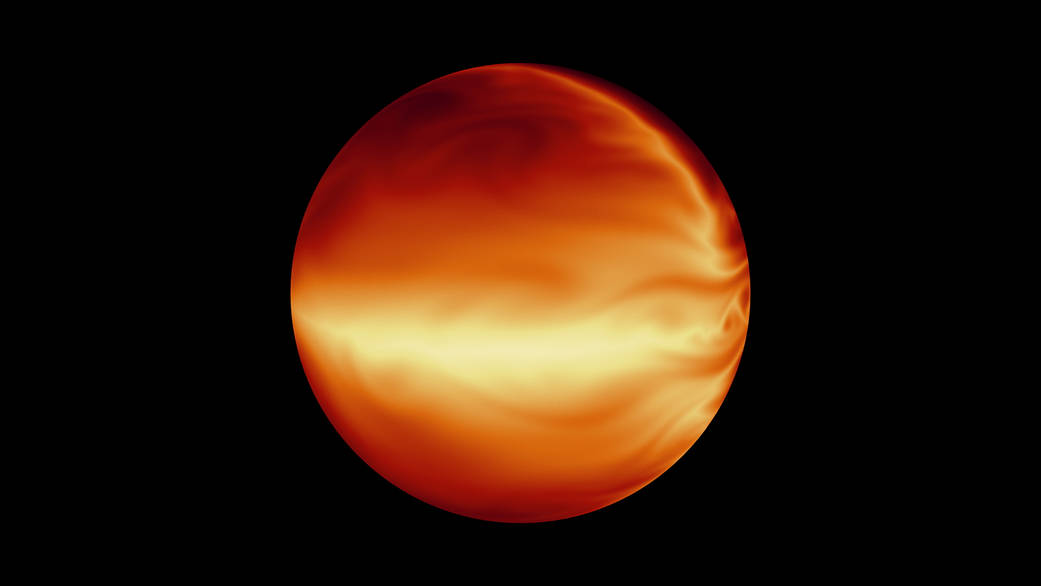
The turbulent atmosphere of a hot, gaseous planet known as HD 80606b is shown in this simulation based on data from NASA's Spitzer Space Telescope.Spitzer measured the whole heating cycle of this planet, determining its coolest (less than 400 degrees Fahrenheit) and hottest (2,000 degrees Fahrenheit) temperatures.
The turbulent atmosphere of a hot, gaseous planet known as HD 80606b is shown in this simulation based on data from NASA’s Spitzer Space Telescope. The planet spends most of its time far away from its star, but every 111 days, it swings extremely close to the star, experiencing a massive burst of heat. Spitzer measured the whole heating cycle of this planet, determining its coolest (less than 400 degrees Fahrenheit) and hottest (2,000 degrees Fahrenheit) temperatures.
Image Credit: NASA/JPL-CalTech




























